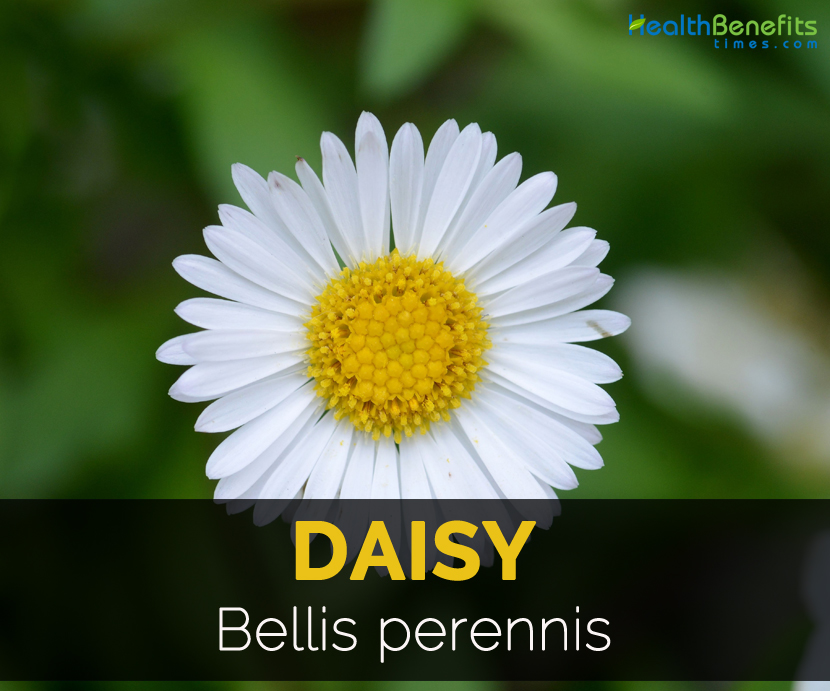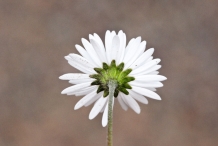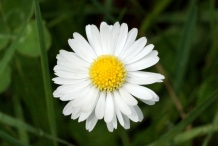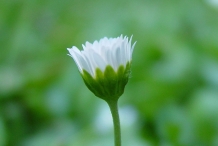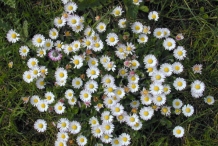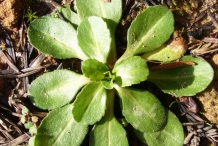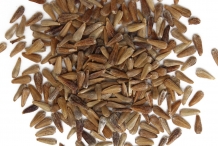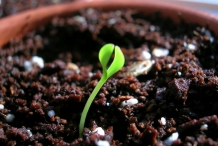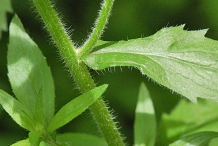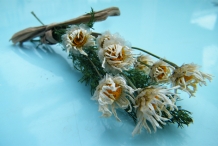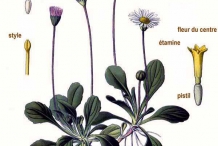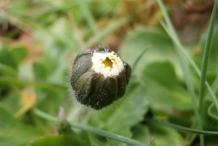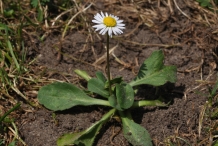| Daisy Quick Facts |
| Name: |
Daisy |
| Scientific Name: |
Bellis perennis |
| Origin |
It is native to western, central and northern Europe and middle Asia. It is introduced to New Zealand and North America. |
| Health benefits |
Brighten skin, Lower dark spots, Prevent saggy skin, Respiratory health, Digestive health |
Bellis perennis is a common European species of daisy belonging to family Asteraceae. Sometimes it is known as common daisy, English daisy or lawn daisy. It is also known as occasionally woundwort and bruisewort. Native to Central, Western and Northern Europe and is naturalized in most temperate regions including Australasia and Americas. Daisy is an annual or herbaceous perennial plant measuring 10 to 25 cm high with sparsely strigose scape and creeping rhizomes. Leaves are rosulate and basal with long winged petioles and lamina is spatulate about 2 to 6 cm by 1 to 2.8 cm with serrated to crenate margins. The terminal and solitary capitula is 2 to 3 cm across. The ray florets are white or pinkish and also in various shades of red, pink and purple. Lamina is about 10 × 1 mm. Disk florets are yellow measuring 2 mm.
Health Benefits of Daisy
The health benefits of daisy are discussed below:
- Brighten skin
The daisy flower extract is used in beauty or skin care products and cosmetics to made toners, serums, ointments, lotions etc. It contains natural substance known as L-arbutin which brightens skin. The excessive exposure to the sun’s UV rays causes overproduction of melanin that results in discoloration or hyper pigmentation that becomes obvious age as dark spots. The extract of L-arbutin blocks
- Lower dark spots
L-arbutin extract can block formation melanin which reduces production of dark spot. The organic acids such as malic and tartaric acid contribute exfoliating skin. The extract of daisy is a perfect substitute of Hydroquinone that is a substance used widely for resolving hyperpigmentation that is derived naturally instead of toxic and harsh ingredients.
- Prevent saggy skin
The daisy flower symbolizes purity and innocence. Its name shows its ability to maintain pure and innocent look with its anti-aging properties. When the skin is exposed to UV sun rays, the collagen fibers are damaged, scar tissues are build up and creation of new collagen is required for healthy and supple skin. When we grow older, the skin begins to wrinkle, sagging and drooping. The make up products that contains daisy extract helps to aid and keep the skin look fresh and youthful.
- Respiratory health
The extract of daisy flower has antitussive, anti-inflammatory and expectorant and is used in form of tea for curing bronchitis, cold and other respiratory tracts. Traditionally daisy is used to cure bronchitis that leads to hydration of mouth and eases breathing so is recommended for respiratory problems. It is used as a mouthwash or gargle to aid sore throat and mouth inflammation.
- Digestive health
The extract of daisy flower possesses diuretic, digestive, purgative and laxative properties. As it stimulates digestion system, it is effective for treating digestive tracts such as diarrhea, mild constipation, liver, gastritis and gallbladder complaints. The extract also contains antispasmodic properties which is effective as an aid for digestive cramps.
- Treat wounds
Daisy flower extract is helpful in healing sores, fresh wounds and scratches. Apply daisy on the top of wounds directly. It contains antibacterial agents so is extracted into liquid poultice and used on battle field and operations for treating wounded soldiers. In ancient Rome, slaves of surgeons who followed Roman legions into battlefield pick sacks full of daisies to extract juice. Bandages were soaked in it and applied to bind sword and spear cuts. Daisies were used during middle ages for treating sprains, bruises and swellings of joints.
- Useful for heavy menstruation
Extract of flower is useful for those women experiencing heavy menstruation and pregnancy. It is beneficial for treating uterus problems leaded by bleeding and debility. It is helpful to lower uterine pain after childbirth and during pregnancy and also when bruises in abdomen are severe.
- Lower fever
Daisy flower extract has diuretic effect which promotes sweating and contributes in lowering fever. It is used as a compress on forehead and as an infusion in cup of tea.
- Rheumatic pain
The ointment of daisy is an aid for inflamed joints as well as wounds. The tincture provides relief from rheumatism and muscle fatigue.
- Detoxification
The extract of daisy when drunk as juice is used for eliminating harmful toxins and harmful substances from the body. It acts as blood purifier which cleanses bloodstream.
Traditional uses
- Traditionally it is used for wounds and to treat delicate and listless children.
- In folk medicine, it is used for rheumatism.
- In Trabzon and Turkey, it is used to provide relief from stomach ache.
- Dried flowering heads are used in decoctions, infusions, poultice and ointments in treating rheumatism, catarrh, liver, arthritis and kidney disorders.
- Leaves are applied externally to bruises, wounds and cuts.
- Use the extract internally for treating inflammatory disorders of liver.
- Chew the leaves to cure oral ulcers.
- Root decoction is used for treating eczema, scorbutic complaints.
- Flowers are used for treating disorders of respiratory tract and gastrointestinal tract.
- It is also used as a cure for fresh wounds.
- Use the distilled water internally for treating liver inflammatory disorders.
- The mild decoction eases respiratory tract complaints, painful menstruation and rheumatic pains.
- In Rome, juice extracted from daisies is used to heal wounds.
- In folk medicine, daisy is used to provide relief from cough, slow bleeding and improve digestion.
Precautions
- Allergic people should avoid it.
- People with health problems should consult the doctor for use.
How to Eat
- Flowers and leaves are consumed as vegetables.
- Petals and flower buds could be consumed raw or added to salads, soups and sandwiches.
- Young leaves are cooked as potherbs or consumed raw in salads.
- It is used as a vitamin supplement and also as a tea.
Other Facts
- Daisy is propagated by seed or by division after flowering.
- Marguerite daisy, Shasta daisies, Gloriosa daisy, African daisy and Gerber daisy are the most popular types of daisies.
- Daisy symbolizes innocence and purity.
- It is a biennial plant which completes its life cycle after two years.
References:
https://www.itis.gov/servlet/SingleRpt/SingleRpt?search_topic=TSN&search_value=36826#null
https://davesgarden.com/guides/pf/go/181/
https://www.pfaf.org/user/plant.aspx?LatinName=Bellis+perennis
http://www.softschools.com/facts/plants/daisy_facts/596/
https://drhealthbenefits.com/herbal/herbal-oil/benefits-daisy-flower-extract
Comments
comments


